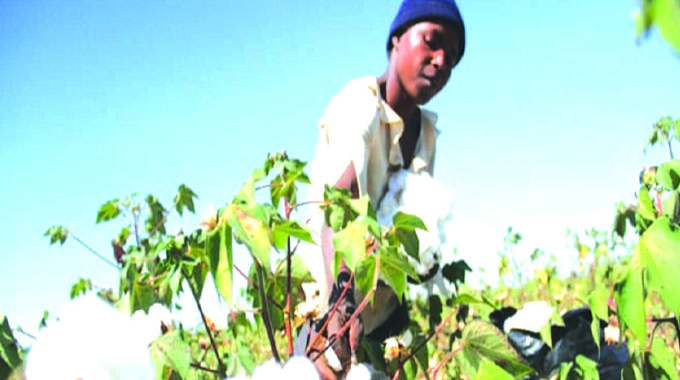Cottco targets 260 000ha

Business Reporter
The Cotton Company of Zimbabwe (Cottco) is targeting to have 260 000 hectares under the cotton crop this year largely driven by the Presidential Free Inputs Scheme, which the firm administers, up from about 230 000 ha last year, an official has said.
Cotton acting accounting officer Mr Munyaradzi Chikasha said in an interview on Monday that 520 000 households would benefit under the scheme launched in 2014.
“We are already receiving the inputs; I would say we are 50 percent in terms of seed and 30percent in terms of basal fertiliser,” said Mr Chikasha.
In Zimbabwe cotton is mainly grown by rural farmers, with the majority (about 85 percent) of them supported by the Government through the Presidential Cotton Free Inputs Scheme.
Under the scheme, farmers get free inputs including, seed, basal and top dressing fertilizer as well as chemicals. Cottco, which administers the scheme also provides tillage services.
The scheme was launched in 2014 in a bid to boost yields after output plummeted to 28 000 tonnes, the lowest yield in nearly two decades after the 1992 drought.
Since the launch of the State-assisted scheme, production has been steadily going up with occasional dips in drought years.
The scheme has helped in the resuscitation of the cotton industry which is a major source of employment for countryside farmers.
Mr Chikasha said Cottco’s intake for this year stood at 46 200 tonnes. The national output was about 55 000 tonnes.
The late onset of rains and erratic rainfall patterns across the country led to a reduction in cotton output.
Chairman of Cottco Mr Sifelani Jabangwe said recently while output declined in 2022 due to poor rainfall, the sector was forecast to rebound in 2023 due to renewed interest in cotton by farmers.
Financially, the exports of cotton produced under the stewardship of Cottco has averaged US$70 million annually, according to official statistics. Earnings have grown from US$11 million in 2016 up to US$70 million last year with additional benefits having been accrued along the value chain and around the cotton production ecosystem.
However, there are growing calls to invest more in value addition facilities. The current spinning capacity cannot absorb the 30 percent of lint earmarked for the local industry because there is not much room to value addition along the textile value chain. Zimbabwe’s cotton season is divided into two phases: planting between October and January and a harvesting and marketing phase that runs from May to September.











Comments